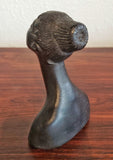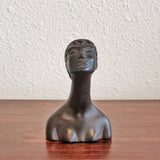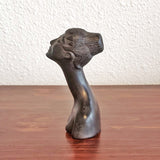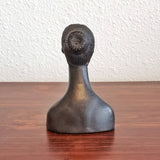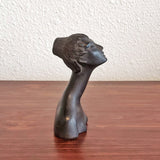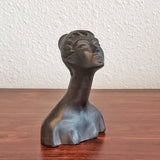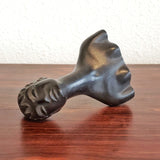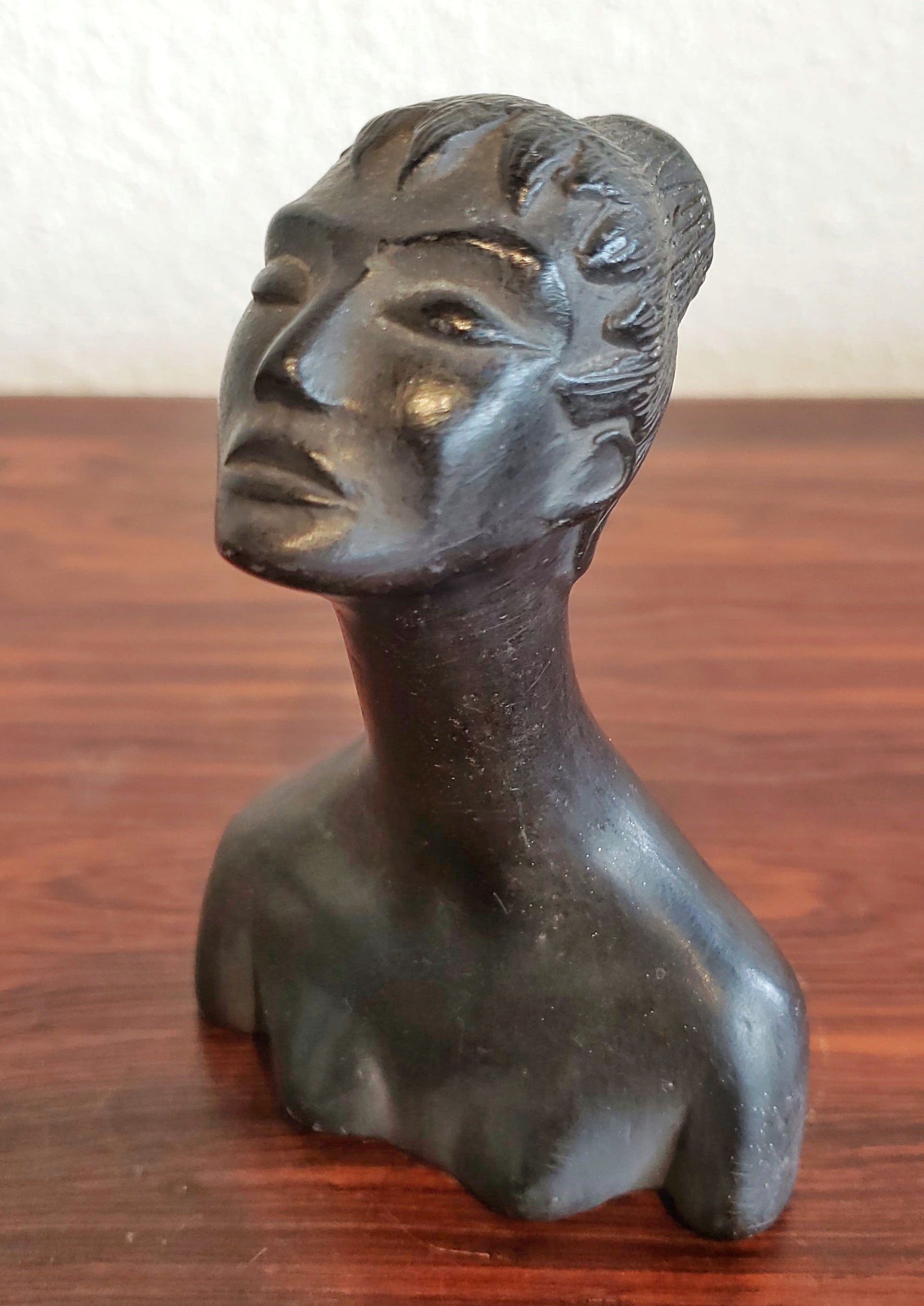
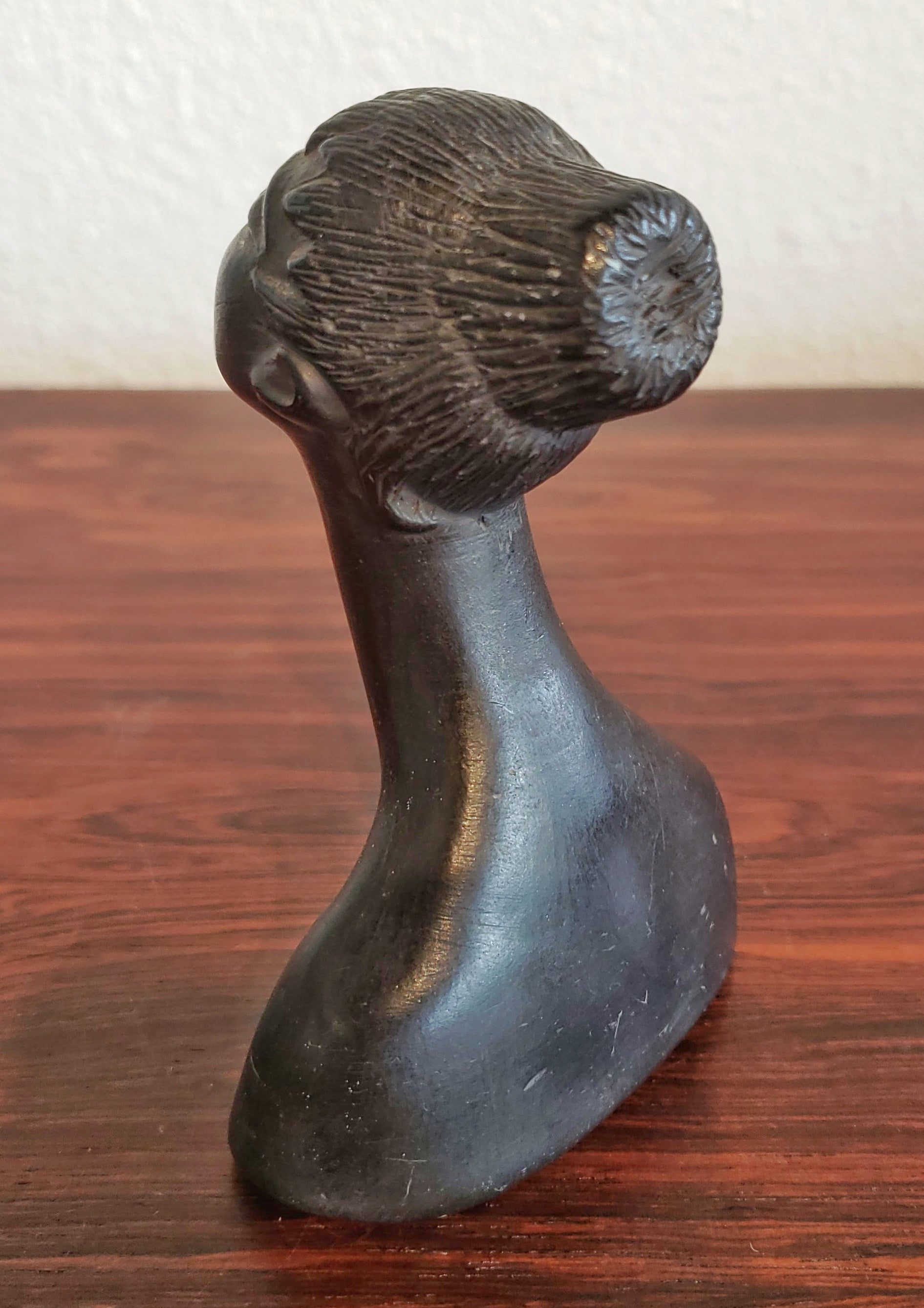
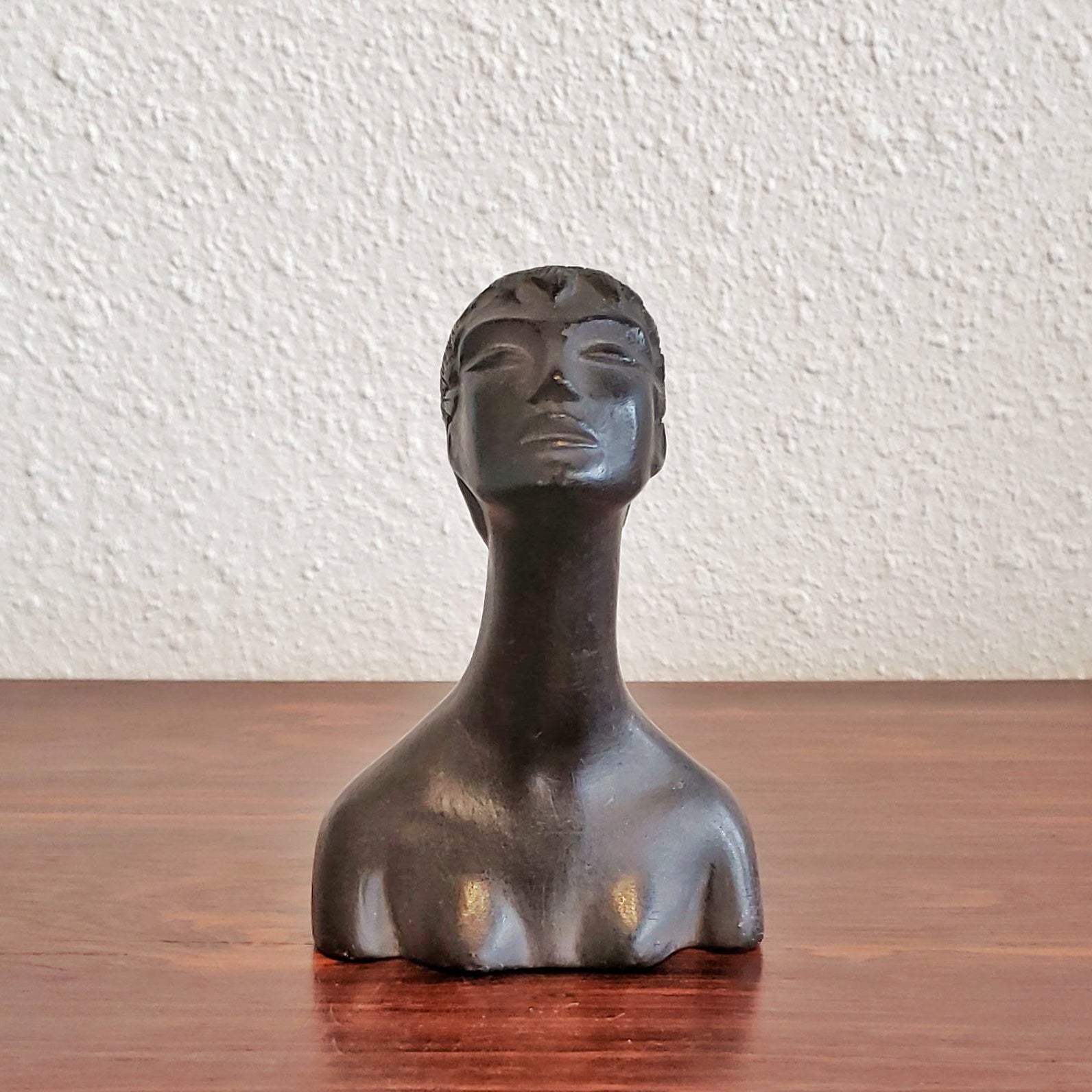
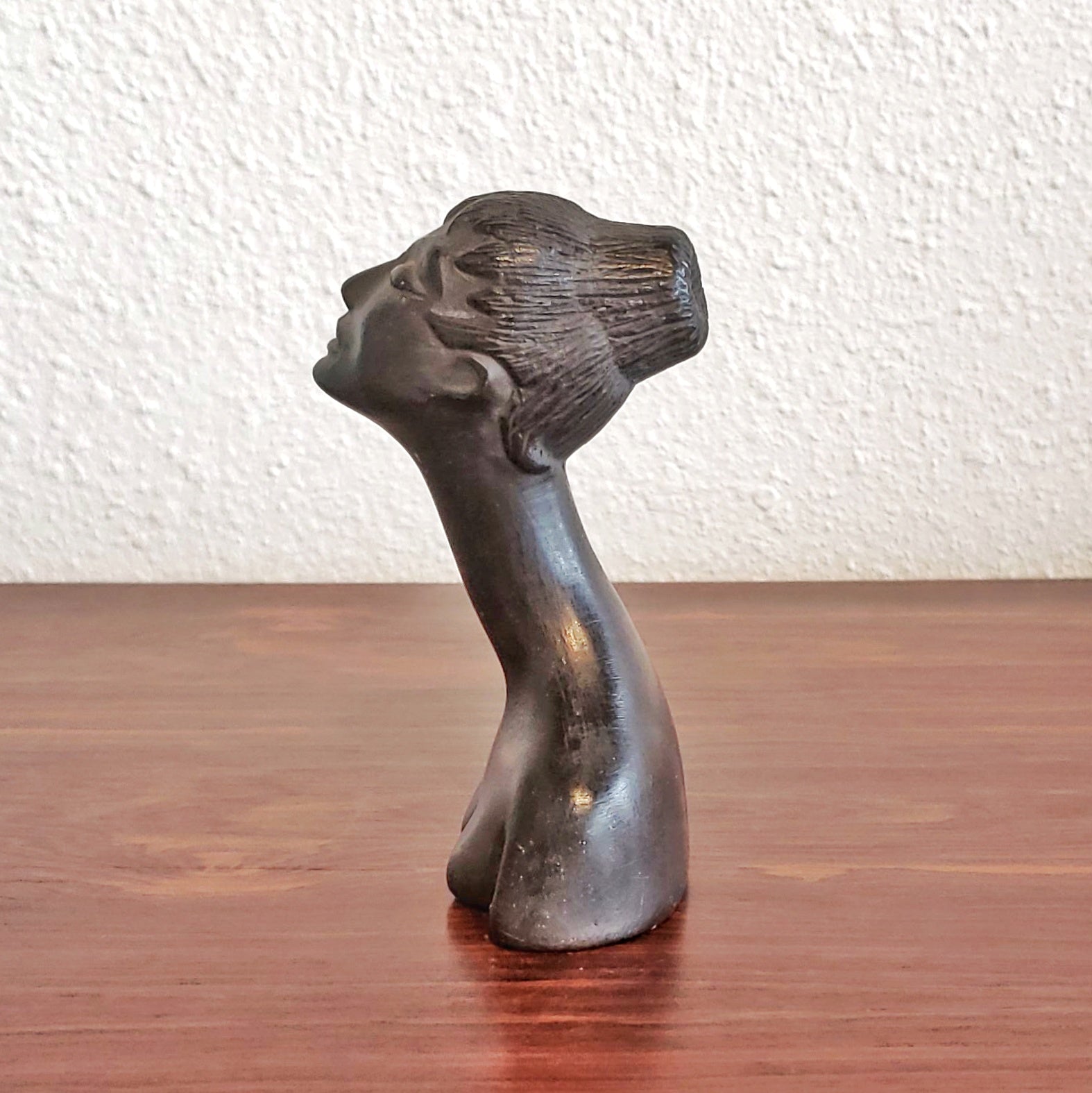
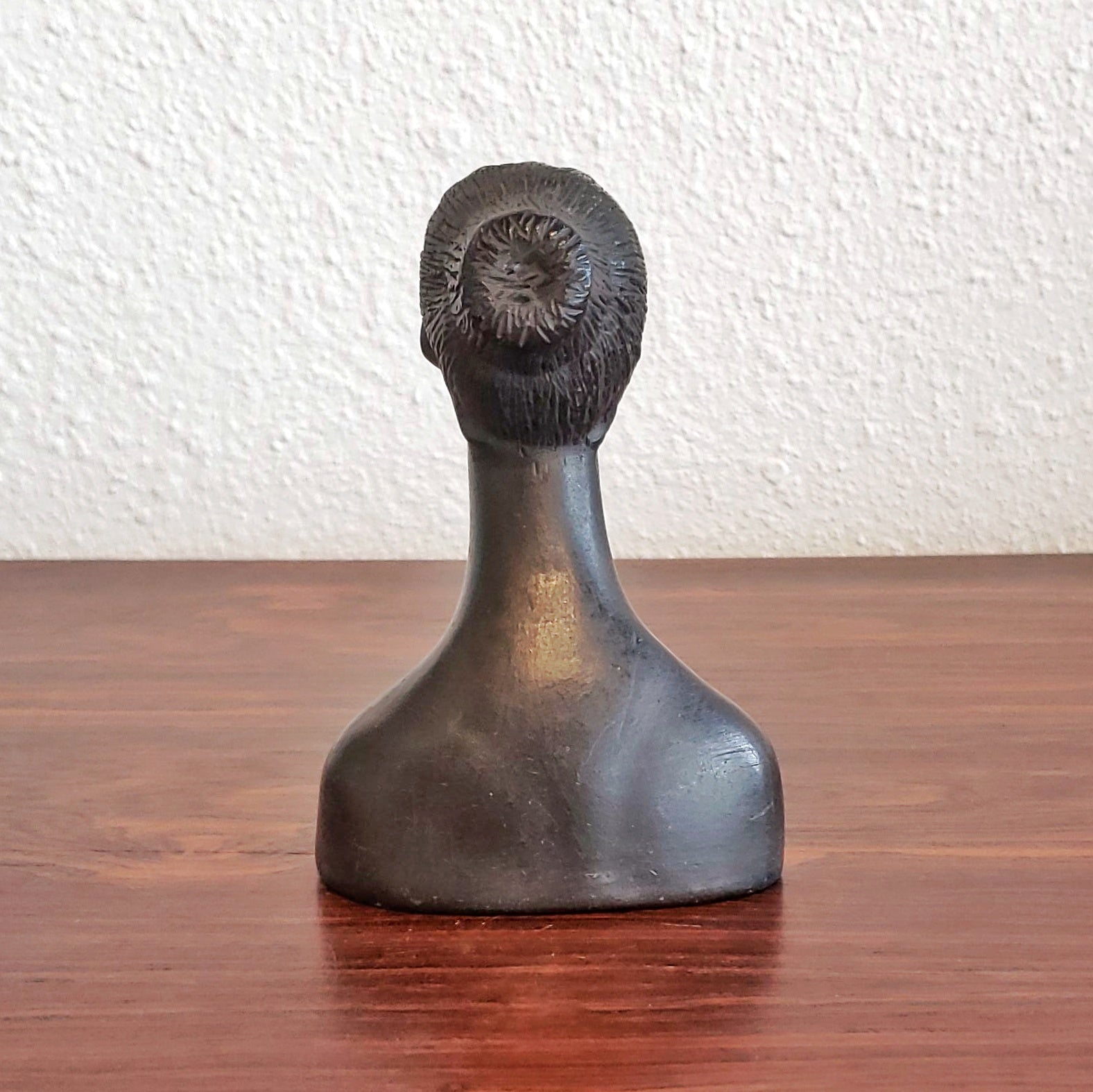
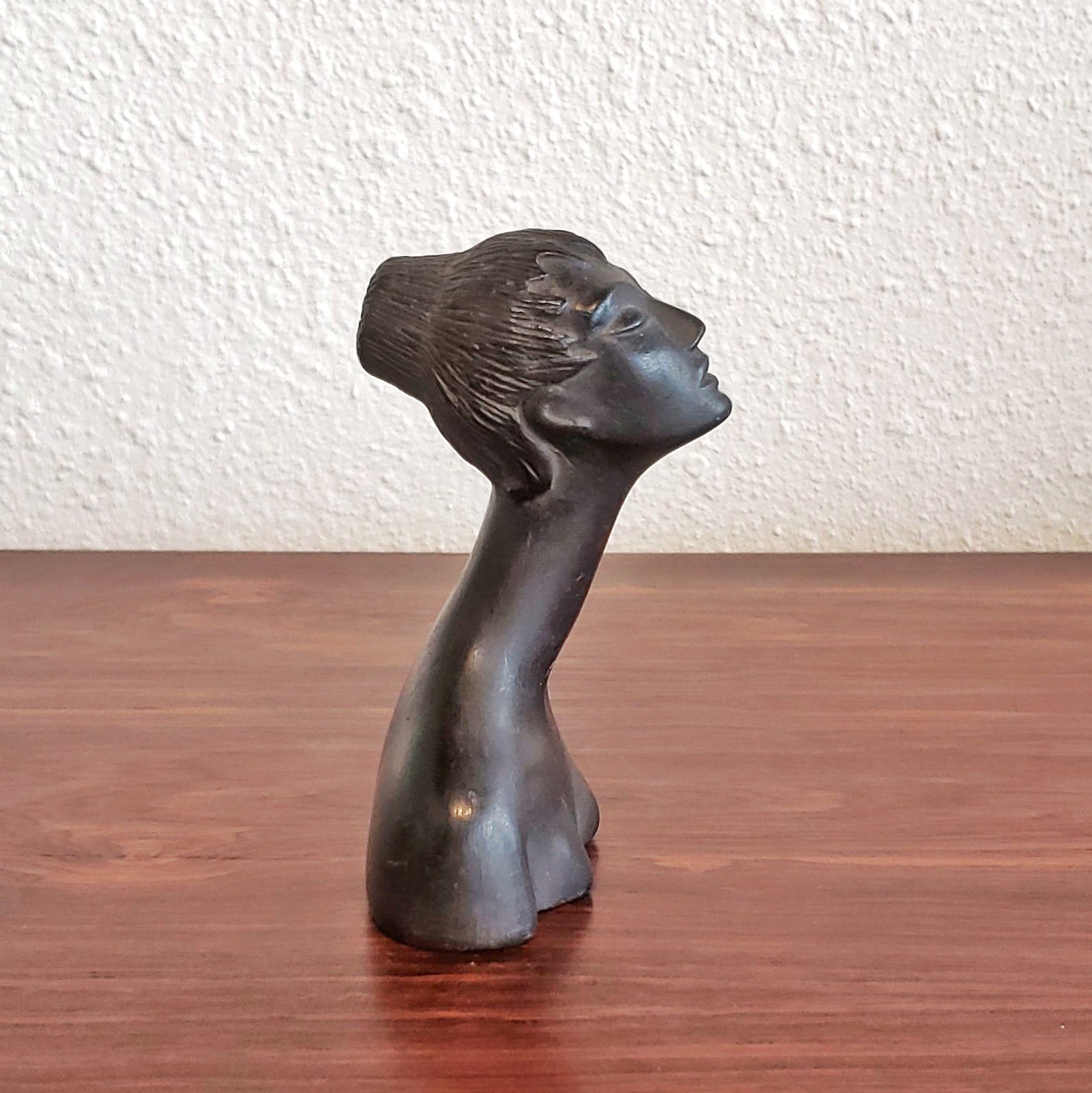
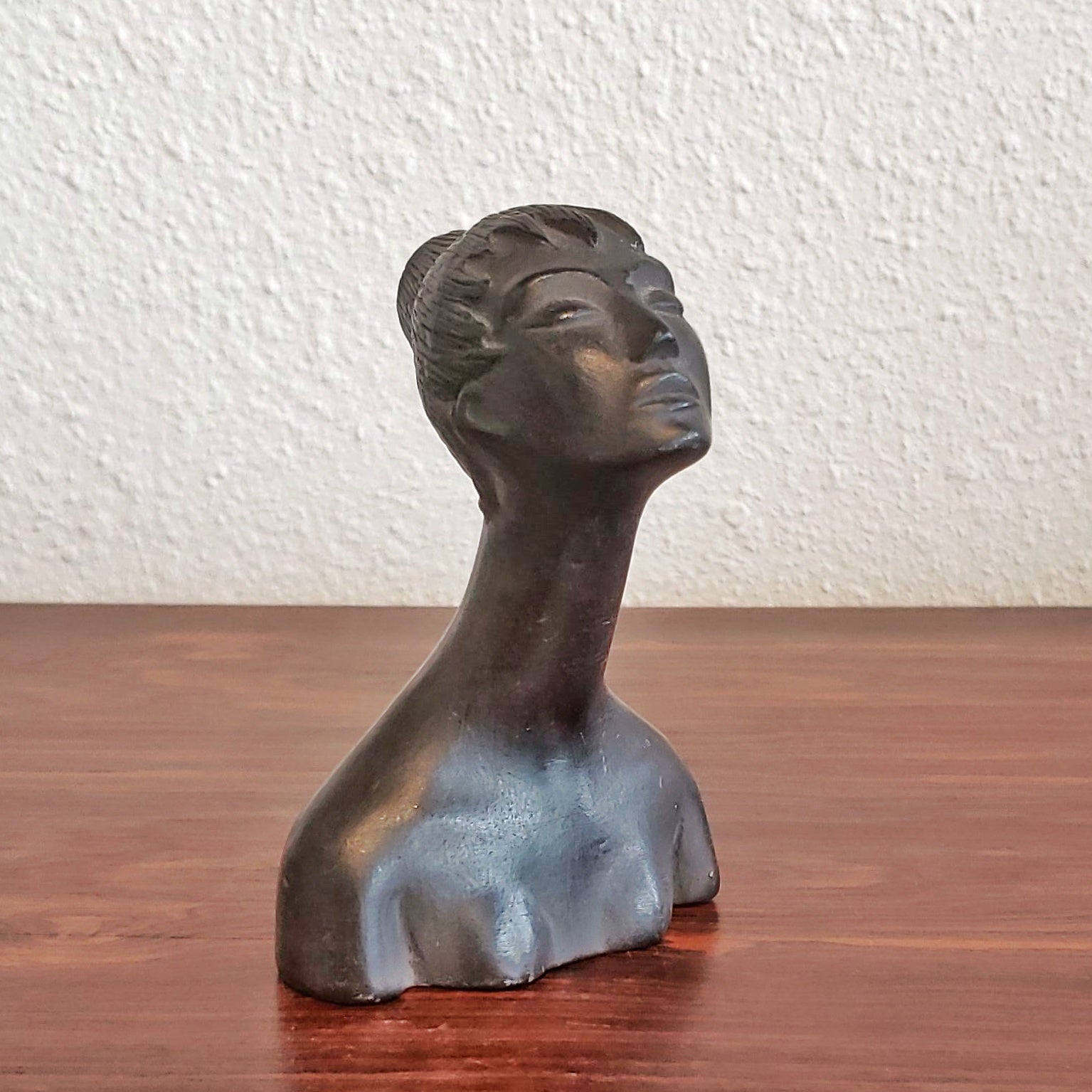
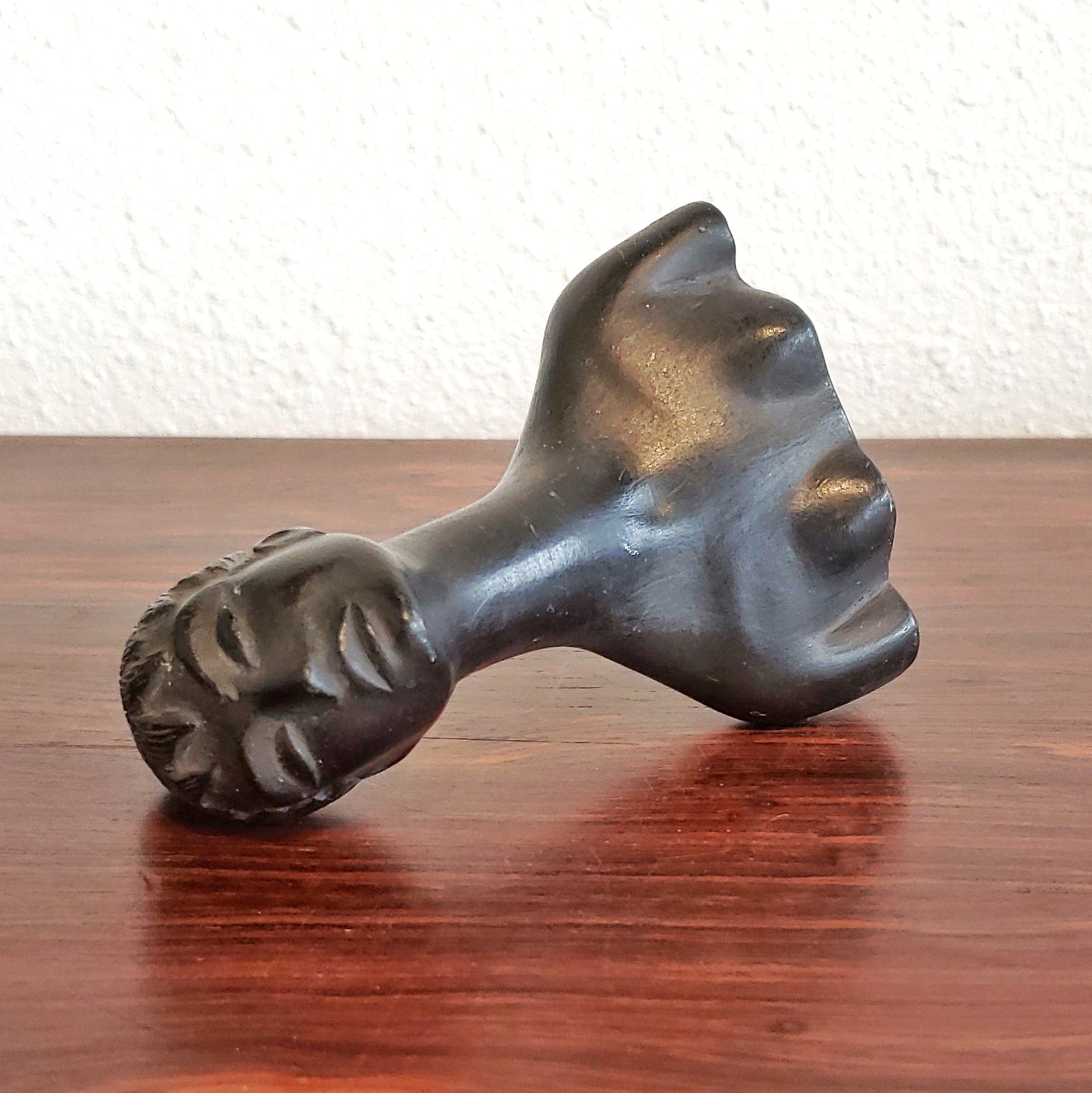
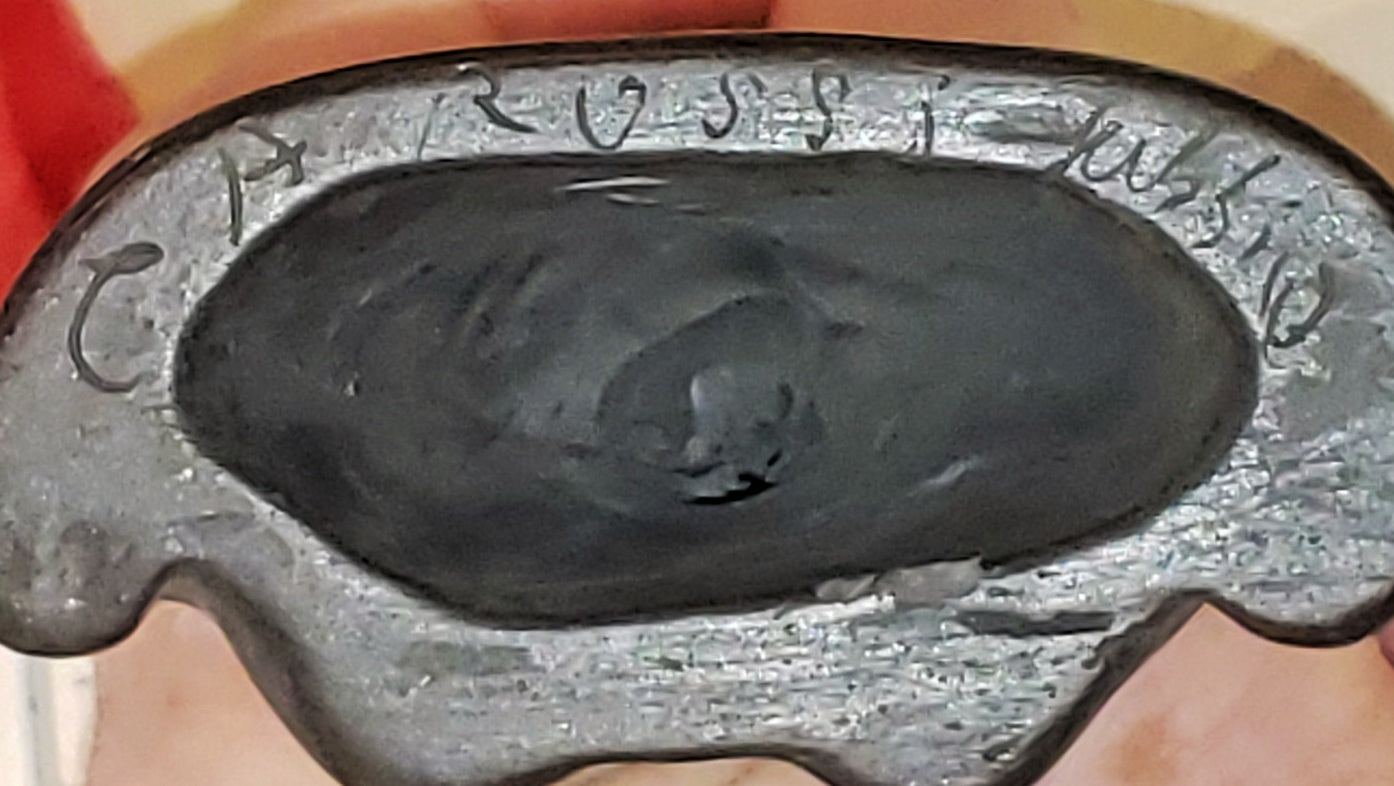
FEMALE BUCCHERO BUST BY CARLO ALBERTO ROSSI (c. 1940s)
CONTACT US HERE ABOUT THIS ITEM.
A fine and rare one of a kind long necked female bust created by the master ceramicist Carlo Alberto Rossi of Gubbio, Italy circa 1940s. She is produced by the Bucchero method of reduction firing which robs the red clay body of its oxygen, turning it black. Rossi is well known for his very successful collaboration throughout the 40s and 50s with the great italian architect and designer Gio Ponti.
CARLO ALBERTO ROSSI (1903-1970) opened his studio workshop the “Manifattura Rossi” in 1932 in Gubbio, Italy along with his brother, Antonio Maria Rossi (1907-1969). His early ceramics were quite typical of other Umbrian pottery and particularly that of Maestro Giorgio with whom the brothers originally worked and apprenticed. The studio has been featured in many important exhibitions and won many awards for excellence, perhaps most importantly a diploma and a medal of recognition from the Head of the Government to the “Company of the Rossi Brothers” in 1934.
Carlo Rossi’s most desirable works were inspired by the Etruscan Bucchero form which had come to the attention of the celebrated architect Gio Ponti by the 1940s. Ponti was known at that time to collaborate with many famous and highly skilled artists and artisans, and he expressly commissioned Carlo to turn several of the models he had designed on paper into fully realized creations in clay, many using the *Bucherro technique of reduction firing. The collaboration would prove to be very successful, and some of their works including "The Buccheri" were shown at the IX Triennale of Milan in 1951.
In the post-war years, Carlo left his collaboration with his brother and officially closed the ‘Manifattura Rossi’ in the 50s, but he continued to devote himself to the production of buccheri and to do some commissioned works until his death in 1970 in his home town of Gubbio. Antonio would go on to open his own studio in Via Savelli della Porta with his wife Assunta Monacelli before his death in 1969. After Antonio Maria's death, the management of the laboratory passed to his wife Assunta Monacelli and today continues with the commitment of his son Gaetano.
*Bucchero (italian pronunciation: [ˈbukkero]) is a class of ceramics produced in central Italy by the region's pre-Roman Etruscan population. This Italian word is derived from the Latin poculum, a drinking-vessel, perhaps through the Spanish búcaro, or the Portuguese púcaro.
Regarded as the "national" pottery of ancient Etruria, bucchero ware is distinguished by its black fabric as well as a glossy black surface achieved through the unique "reduction" method in which it is fired. After the leather-hard unfired ware is arranged in the kiln and the fire started, the vent holes are closed, thus reducing the supply of oxygen required in a normal kiln firing. In the smoke-filled atmosphere of the kiln, the oxygen-starved flames draw oxygen molecules from the iron oxide of the pottery. This process causes the fabric of the clay to change color from its natural red to black. Thus, in contrast to the black-glazed Campanian ware of the Greek colonists in southern Italy, the lustrous, shiny, black surface of many bucchero pots is achieved by diligent burnishing (polishing) or, occasionally, through the application of a thin slip (clay emulsion).
| Designer | CARLO ALBERTO ROSSI |
|---|---|
| Manufacturer | Manifattura Rossi |
| Design Period | 1920 to 1949 |
| Production Period | 1940 to 1949 |
| Country of Manufacture | Italy |
| Identifying Marks | This piece has an attribution mark |
| Style | Vintage, Mid-Century, Italian Modern, Hand-Crafted, Modernist |
| Detailed Condition | Excellent — This vintage piece is in near original condition. It may show minimal traces of use and/or have slight restorations. |
| Product Code | |
| Materials | Ceramic |
| Color | Black |
| Width | 3.0 inch |
| Depth | 2.3 inch |
| Height | 4.5 inch |


